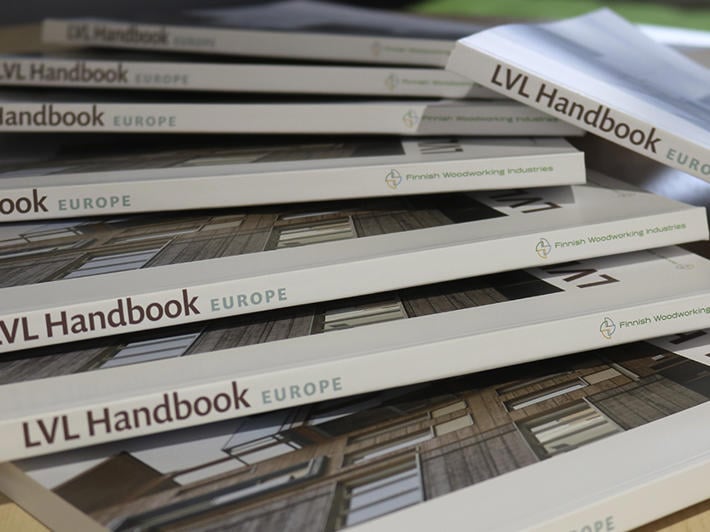The European LVL handbook is the first comprehensive summary of the properties and end uses of structural LVL (laminated veneer lumber) products. It has been published by the Federation of the Finnish Woodworking Industries. The handbook is an extensive source of information for designers, engineers and builders.
Glued veneer structure makes structural LVL an efficient material for construction. The product is used for beams, plates, studs, panels and elements: from new buildings to renovations and further industrial applications.
The companies Metsä Wood, Stora Enso Wood Products and Raute Oyj participated in the project.
